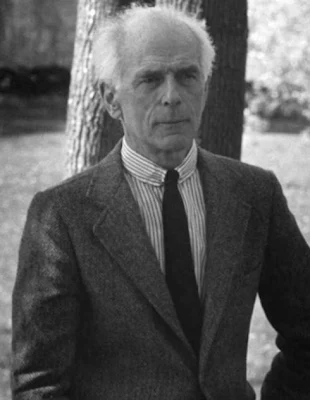John Angus Chamberlain was an
American sculptor. At the time of his death he resided and worked on
Shelter Island, New York died he was 84..
[2]
(April 16, 1927 – December 21, 2011[1])
Early life and career
Born in
Rochester, Indiana as the son of a saloonkeeper,
[3] Chamberlain spent much of his youth in
Chicago. After serving in the
U.S Navy from 1943 to 1946, he attended the
Art Institute of Chicago (1951–52) and
Black Mountain College (1955–56). At Black Mountain, he studied with the poets
Charles Olsen,
Robert Creeley, and
Robert Duncan, who were teaching there that semester.
[4] The following year, he moved to New York, where for the first time he created sculpture that included scrap-metal auto parts.
[5]
Over the course of his prolific career, he had studios in New York, New
Mexico, Florida, Connecticut, and finally Shelter Island.
[6]
Work
Chamberlain is best known for creating sculptures from old automobiles (or parts of) that bring the
Abstract Expressionist
style of painting into three dimensions. He began by carving and
modelling, but turned to working in metal in 1952 and welding 1953.
[7] By 1957, while staying with the painter
Larry Rivers in Southampton, New York,
[8] he began to include scrap metal from cars with his sculpture
Shortstop,
[9]
and from 1959 onward he concentrated on sculpture built entirely of
crushed automobile parts welded together. By the end of the 1960s,
Chamberlain had replaced his signature materials initially with
galvanized steel, then with mineral-coated Plexiglas, and finally with
aluminum foil. In 1966, he began a series of sculptures made of rolled,
folded, and tied
urethane foam.
[10]
Since returning in the mid-1970s to metal as his primary material,
Chamberlain has limited himself to specific parts of the automobile (
fenders, bumpers, or the
chassis, for example).
[11]
In 1973, two 300-pound metal pieces by Chamberlain were mistaken for
junk and carted away as they sat outside a gallery warehouse in Chicago.
[8]
In the early 1980s, Chamberlain moved to
Sarasota, Florida,
where a 18,000-square-foot warehouse studio on Cocoanut Avenue enabled
him to work on a much grander scale than he previously had.
[5]
Many of the subsequent works Chamberlain made in Florida revert to more
volumetric, compact configurations, often aligned on a vertical axis.
As seen in the so-called
Giraffe series (circa 1982–83), for
example, linear patterns cavort over multicolored surfaces—the results
of sandblasting the metal, removing the paint, and exposing the raw
surface beneath.
[4] In 1984, Chamberlain created the monumental
American Tableau created for display on the
Seagram Building's plaza.
[12]
Chamberlain also made abstract colour paintings from 1963, and from 1967 he made several films, such as "Wide Point" (1968)
[7] and “The Secret Life of Hernando Cortez,” filmed in Mexico with Warhol regulars
Taylor Mead and
Ultra Violet.
[8] In the last decade of his life, the artist expanded his work to large-format photographs.
[13]
Exhibitions
Chamberlain’s first major solo show was held at the Martha Jackson Gallery, New York, in 1960.
[13] His singular method of putting discarded automobile-body parts together led to his inclusion in the paradigmatic exhibition “
The Art of Assemblage”, at the
Museum of Modern Art in 1961, where his work was shown alongside modern masters such as
Marcel Duchamp and
Pablo Picasso.
[14] His works have since been exhibited around the world and have been included in the
São Paulo Art Biennial (1961, 1994), the
Whitney Biennial (1973, 1987) and
Documenta,
Kassel, Germany (1982) and he has had over 100 solo shows, including
Dia Art Foundation (1983); Staatliche Kunsthalle Baden-Baden and
Staatliche Kunstsammlungen Dresden (1991);
Stedelijk Museum, Amsterdam (1996); and
Menil Collection, Houston (2009).
[15] Chamberlain represented the United States at the
Venice Biennale in 1964. He had his first retrospective in 1971, at the
Solomon R. Guggenheim Museum, New York. A second retrospective was organized in 1986 by the
Museum of Contemporary Art, Los Angeles.
[16] A special exhibition of Chamberlain's foam sculptures and photographs was on view at the
Chinati Foundation in 2005-06.
[17] Chamberlain supposedly has a work of art on the moon in the
Moon Museum.
Collections
Chamberlain's work is represented in many major public collections including
Chinati Foundation, Marfa, Texas;
Menil Collection, Houston;
Solomon R. Guggenheim Museum, New York;
Whitney Museum of American Art, New York;
Museum Ludwig, Cologne;
Tate Modern, London;
[14] Galleria Nazionale d'Arte Moderna, Rome;
Hirshhorn Museum and Sculpture Garden, Washington, D.C.;
Kunstmuseum Winterthur, Switzerland;
Moderna Museet, Stockholm;
Centre Pompidou, Paris; Museum Moderner Kunst, Vienna;
Museum Brandhorst, Munich;
Philadelphia Museum of Art;
Nelson-Atkins Museum of Art, Kansas City;
Saint Louis Art Museum; and
Walker Art Center, Minneapolis.
[18]
Recognition
Legacy
In 1962
Donald Judd
wrote, "The only reason Chamberlain is not the best American sculptor
under forty is the incommensurability of 'the best' which makes it
arbitrary to say so."
[20]
Quotes
Speaking about the "meaning" of his work he has said "Even if I knew, I could only know what I thought it meant.”
In allusion to how he worked he has said “When a sculpture is nearly
done, you can put things on and you take them off and it doesn’t make
any difference…"
And, “Stopping is the key; you have to know when to stop. If I feel
so glad that a sculpture is here, and I don’t care who did it, then I
figure it’s a good piece.”
[21]
Art market
In 2011, Chamberlain's
Nutcracker (1958) from the Allan Stone
Estate sold at auction for $4.7 million, more than twice its high $1.8
million estimate and a record price for the artist at auction.
[22]
Chamberlain has been represented by
Gagosian Gallery since 2011.
[8] Before joining Gagosian, he was represented by The
Pace Gallery from 1987 to 2005 and
Leo Castelli from 1962 to 1987.
To see more of who died in 2011
click here









